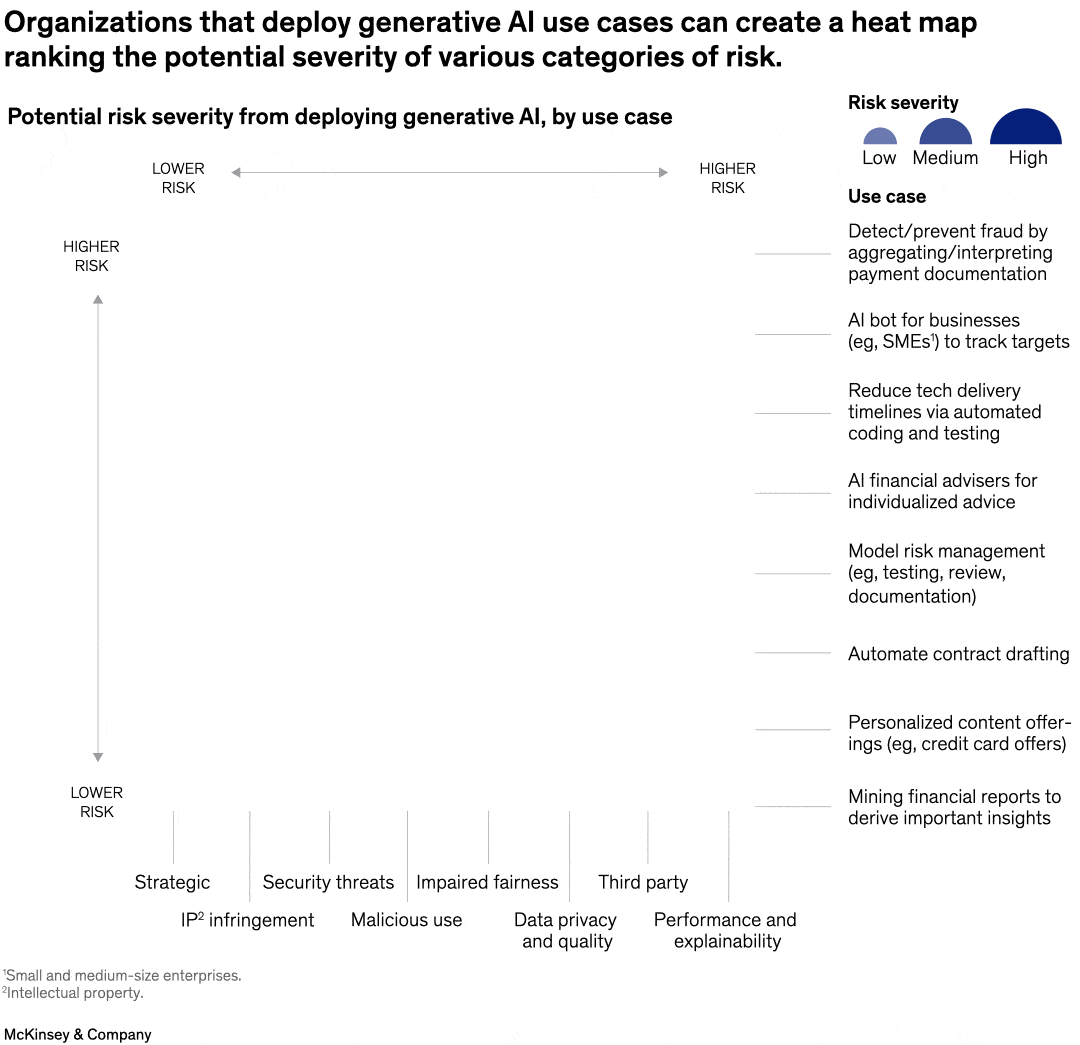Which generative AI opportunities should organizations pursue? A good starting point may be to map out potential risks associated with use cases in specific categories, senior partner Lareina Yee and coauthors explain. Use cases involving customer care, for example, such as chatbots powered by generative AI, could increase risk related to bias or could produce inaccurate answers due to outdated information.

Image description:
A bubble heat map shows the severity of the potential risks associated with deploying generative AI in different use cases across various categories of risk. The risks for the 8 use cases are categorized as high, medium, or low in 8 different risk categories, forming a grid of 64 circles. The top right of the heat map shows the highest risk use cases and the highest risk categories. The highest risk use case, “detect/prevent fraud by aggregating/interpreting payment documentation,” scored high in the risk categories relating to impaired fairness, data privacy and quality, third party, and performance and “explainability.” The second-highest risk use case, “AI bot for businesses to track targets,” scored as having high risk in the data privacy and quality, third party, and performance and explainability categories. At the opposite end of the spectrum, “mining financial reports to derive important insights,” ranked as having the lowest risk of all use cases, with a high risk score in the single category of potential intellectual property infringement.
End of image description.
To read the article, see “Implementing generative AI with speed and safety,” March 13, 2024.